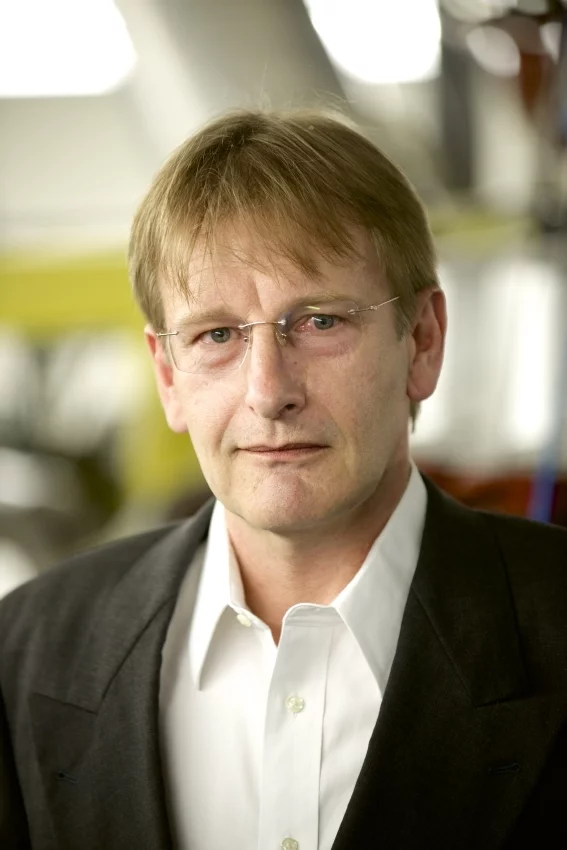The supply of a vapour saturated gas mixture plays a crucial role in many industrial processes. In this way, for example, the emission of nitrogen oxides during diesel combustion can be reduced by ensuring high vapour saturation of the gas mixture. A scientist at the Paul Scherrer Institute has come up with an invention which enables this to be implemented industrially in the future via a simple, flexible and robust technique.
In many industrial processes, supplying a vapour saturated gas mixture plays a crucial role. In this way, for example, the emission of nitrogen oxides from diesel combustion can be reduced by high vapour saturation. In air conditioning for buildings too, one would like to have air that is as saturated as possible with moisture, so it can be mixed with external or exhaust air from a room, thereby producing an optimal humidity in working or living spaces.
However, obtaining a gas mixture with exactly one hundred per cent vapour saturation remains a highly challenging technical task. Saturated gas is in reality frequently produced by removing the surplus liquid from a supersaturated gas mixture. Supersaturation implies that one starts with a gas that contains more water vapour than it could under normal conditions of temperature and pressure. This supersaturated gas is produced by injecting a finely distributed droplet mist into the gas, whereby the excess humidity remains in the liquid phase. The excess water vapour can condense out again, however, as soon as the gas cools down. And this condensate, which is deposited onto the walls of the tank, can once again be absorbed and entrained by the gas stream, especially if the gas stream has a sufficiently high speed. In this way the liquid water can find its way back into the saturated gas, which can cause damage, such as corrosion, to machinery or equipment.
Withstanding the turbulence
So how can you ensure that once separated, this liquid actually stays out of a saturated gas stream? It is for exactly this question that an invention from PSI scientist Klaus-Werner Hoyer –for the first time – provides a satisfactory response. Hoyer has suggested a cyclone separator, like those routinely used in many processes like cleaning seeds, but supplied for use with a moulded insert made from a porous material that traps the separated liquid safely. In cyclonic separation, unwanted liquid or solid components are separated from a gas by the action of centrifugal forces. These are heavier than the gas, and are therefore thrown against the outer walls of the tank by centrifugal forces. In contrast to a centrifuge, rotational motion of the container is not required in a cyclone; the centrifugal force derives instead from the swirling flow of the gas being fed into the container itself. The cone-shaped, downwardly tapering geometry also enhances the effect of the separator.
A common problem with cyclone separators is that the separated liquid can be torn down from the wall by the constant flow of gas against it, and can therefore re-enter the gas stream. Hoyer’s invention seeks to resolve this. With it, the condensate is captured in the pores of an insert made from a wetting, hydrophilic material, positioned in the lower section of the separator. The porous insert is fitted with a level sensor, which allows the excess humidity to be removed as required. Furthermore, the insert itself can be replaced when its proper functioning is hampered due to contamination. Once the separator becomes full, backflow of condensate into the saturated gas is rendered impossible by the capillary action of the pores in the “condensate trap”, even at very high gas flow rates.
Marine diesels are the first to benefit
According to Hoyer, this offers several advantages: firstly, you can now increase the permissible flow velocity of gases without the need for a bigger separator, which means you can increase the gas throughput and still keep the system design very compact. In addition, the separator will now operate reliably at higher gas stream temperature and pressure values. All you need to know are these operating values and the properties of the gas in question, such as its wetting behaviour. Then the porous material corresponding to these conditions can be selected, and the separator can be designed accordingly.
Hoyer’s invention has already been distinguished by being shortlisted among the top 3 at the 2012 Swiss Technology Award. Now, in collaboration with the research department of Finnish engine manufacturer Wärtsilä, the PSI scientist wants to put his idea into practice. His own aim is ambitious: in around five years’ time, he wants all of Wärtsilä‘s diesel engines to be emitting far less nitrogen oxides over the world’s oceans, with the help of his invention.
Text: Leonid Leiva
Contact
Dr. Klaus Werner Hoyer, Combustion Research Laboratory, Paul Scherrer Institute,Telephone: +41 56 310 40 93, E-Mail: klaus.hoyer@psi.ch


![The gas mixture to be de-humidified flows tangentially through an inlet pipe (1) into the separator, and flows downwards like a tornado (hence the name ‘Zyklon‘[‘cyclone‘]). Centrifugal forces push the excess liquid onto the outer walls. This condensate film (5a) can be torn away from the walls again by the flowing gas. To prevent this happening, a porous insert is fitted inside the lower section of the separator. This is designed so that the condensate in area 4a directly underneath outlet pipe 2a (via wh…](/sites/default/files/styles/primer_slick_scale/public/import/media/MM20130627_Hoyer_ZyklonabscheiderDE/Zyklon.JPG.webp?itok=s9f3c_MJ)